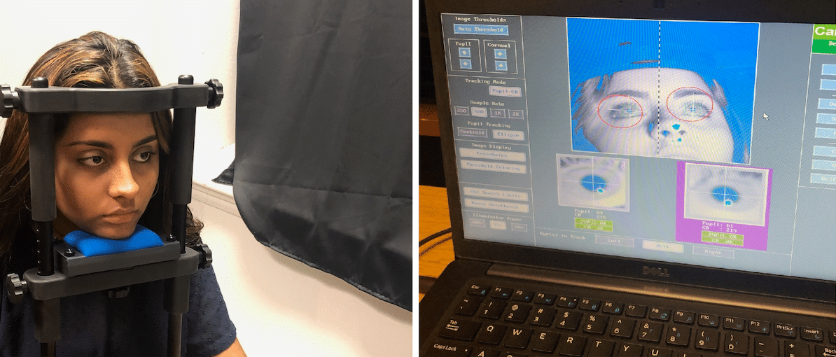
Eye Tracking: The Future of Concussion Diagnosis
- Post by: Danny Holland
- September 17, 2021
- Comments off
Will coaches one day be able to diagnose concussions on the field? Mississippi INBRE funded researcher Dr. Nicolas Brunet, Assistant Professor of Neuroscience at Millsaps College, recently received a grant from the NIH to further his research into using eye tracking to diagnose concussions. The grant has major implications for the future of concussion diagnosis.
Concussions can often go undiagnosed due to the differing symptoms that show when the brain is injured. Because any injury to the brain will likely affect the movement of our eyes, eye tracking is increasingly believed to be key in detecting concussions sooner. With the development of smartphones, this means coaches may one day be able to assess injured players on the field.
“Although mobile gaze interfaces are rapidly evolving, smart phones are not equipped, yet, with cameras that have the characteristics necessary to turn the proposed technique into a smart device application. Smartphone cameras, however, are improving exponentially. I am therefore confident that diagnostic eye tracking on the field will become a reality in the not so distant future,” Dr. Brunet stated.
While existing studies on using eye movements to diagnose concussions have focused on measuring saccades, a French term meaning eye movements, Dr. Brunet thinks the key to using this method is to also measure and include microsaccades, or the smaller movements our eyes make when fixed on something.
Dr. Brunet explains, “Detecting those tiny movements is not easy, because it requires high frequency sampling and specialized software. My preliminary results suggest that including microsaccades will significantly increase the resolution of assessing oculomotor behavior, and therefore significantly increase the reliability to use eye movements to diagnose concussion.”
Dr. Brunet and his team of undergraduate researchers at Millsaps College are using a high-end eye tracking device purchased by Mississippi INBRE to measure these microsaccades. To fully investigate the phenomena, however, he needs to collect data from a large number of both concussed athletes and healthy individuals. This has proved to be the biggest challenge.
“To illustrate with an example, why this is a challenge: last year, a student who was scheduled to participate as a health participant emailed me that she couldn’t make it because… she sustained a concussion. By the time I received her email, she was already home, out of state, to recover.”
With the NIH grant, Dr. Brunet will be able to recruit more participants and potentially expand his research to other institutions. Mississippi INBRE is confident that Dr. Brunet’s research will contribute to how we diagnose concussion in the future.
